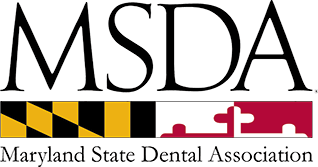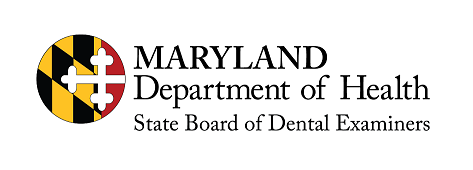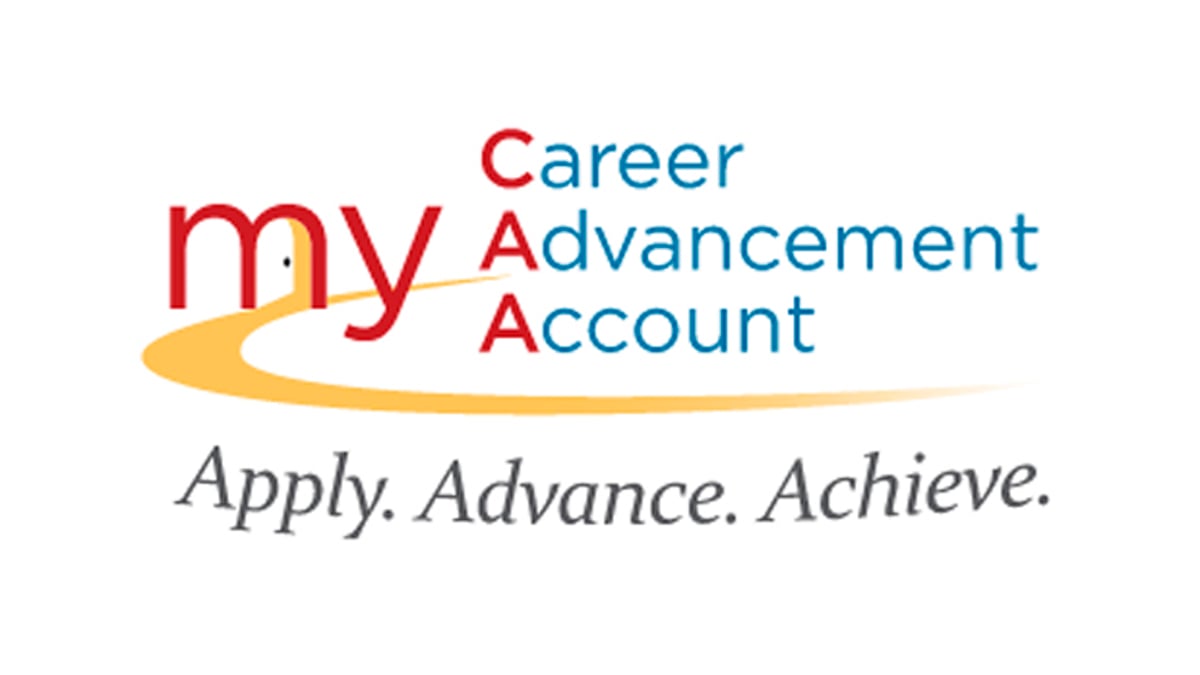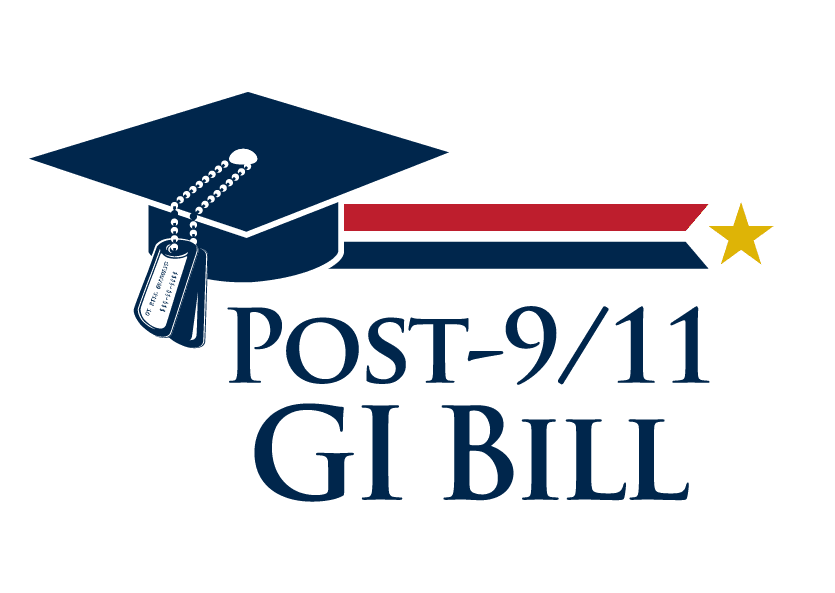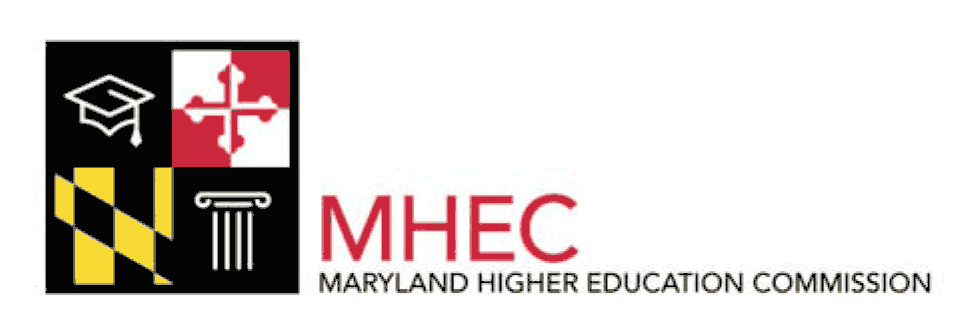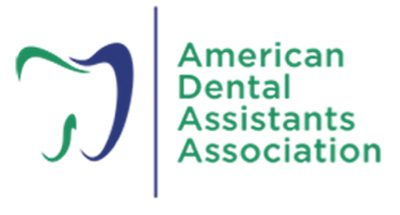Downloadable MD Catalog Supplement
Downloadable VA Catalog Supplement
Governing Board: Sharon Gaylord, DDS and Scott Becker
Owner: Marvin Becker, DDS Family Trust
Disclosure
DATS of Maryland, LLC or DATS of Virginia, LLC reserve the right to change programs, start dates, tuition, and to cancel programs. Any changes will be made in accordance with the rules of the regulatory agencies that oversee our schools. Please see the state specific catalog supplement to find information regarding your school location.
Program Performance
Students and prospective students may obtain information regarding the performance of each approved program. This includes but is not limited to information regarding each program’s enrollment, completion rate, placement rate, and (if applicable) pass rate of graduates on any licensure examination. See the state catalog supplements for details.
Goals and Objectives
Because of the demand for dental assistants, dental practitioners often hire people with little or no training or experience and then provide them with on-the-job training. As a result of the demand for dental assistants, DATS created a training program that teaches the necessary entry level skills needed to work in a dental office. The program is short so that students can go from the classroom to the workplace quickly. DATS training typically results in individuals finding employment at a higher salary level than with no training.
It is the mission of DATS to provide entry-level dental assistant training that allows an individual to complete training and seek employment in the shortest time possible. Training focuses solely on the fundamental knowledge and skills needed to work in a dental office. Students learn in an actual dental office and get familiar with the work environment before their first day on the job.
History
The DATS (Dental Assistant Training Schools) program was developed by several practicing dentists over 15 years ago. DATS of Maryland & Virginia, Inc. was organized July 2002 to establish schools in those states. DATS of Maryland & Virginia, Inc. was reorganized in 2007 between DATS, Inc., DATS of Maryland, LLC and DATS of Virginia, LLC. Currently there are schools operating in Maryland and Virginia under DATS of Maryland, LLC and DATS of Virginia, LLC. The policies and procedures contained in this catalog pertain to all DATS school locations, unless otherwise noted.
Occupational Preparation
The vocational objective of this program is to sufficiently train students to seek employment in a dental office as an entry-level dental assistant, receptionist, clerical or clinical assistant. The program’s x-ray training qualifies the student to apply for the DANB® Radiation Health and Safety Examination so that the student may perform x-rays.
About the Field
Typically entry-level dental assistants handle a variety of tasks for the dental professional and provide assistance in patient care, the office, and laboratory. Entry-level dental assistants work chair side with the dentists and other dental staff. Examples of tasks include helping to make patients comfortable, preparing them for treatment, and obtaining dental records. Usually entry-level dental assistants hand instruments to the dentists, help keep the patient’s mouth dry, sterilize and disinfect instruments, prepare tray setups, and instruct patients on postoperative and general oral health care.
There are many opportunities as a dental assistant. According to the U.S. Department of Labor, because of rapid employment growth and substantial replacement needs, there should be good job opportunities for dental assistants nationally. Entry-level dental assistants can seek certification as a Certified Dental Assistant once they meet work experience requirements.
The dental assisting field generally requires physical work, moving throughout the office, standing on one’s feet for long periods of time, and sometimes in small places. Dental assistants have close contact with the public and for this reason, successful candidates must be in good physical health.
Entry-Level DENTAL ASSISTANT
Training Program
Classroom format
Training is offered on two weekday evenings for 11 weeks for a total of 21 class sessions or for 11 Saturdays for 8 hours each day (84 classroom hours). Training takes place within a fully functional dental practice when the office is closed. The maximum student to instructor ratio for this program is 10:1 for classroom and 5:1 for laboratory. This gives the student hands-on experience in all areas of dental assisting using the treatment rooms, laboratory, x-ray facilities, and office area. Each session is divided into lecture and lab. During the lecture portion the student views slides or PowerPoint presentations presented by an instructor. There is time for questions, answers, and review. The second part of the class focuses on learning and practicing skills utilizing office treatment rooms, labs, and equipment.
Externship
Each student, as a requirement of graduation, will participate in 20 hours of externship. The externship may begin no sooner than after passing the first 2 quizzes and mid-term exam. All externship hours must be completed by the last scheduled class. The student will be provided with the contact information of any dental office(s) that is participating in the externship. The student will schedule their extern hours at a time that is mutually convenient for the dental office and themselves. The externship will allow the student to test the skills and abilities that should have been acquired during approximately the first half of their instructional segment of the DATS curriculum. Upon completion of the externship, the student will submit a time sheet, signed by the dental office, to DATS to verify the required hours have been completed. The dental practice will also complete an evaluation of the student’s progress. This evaluation will document the level of performance experienced by the dentist of the student during the externship. The externship will be evaluated and graded on a pass/fail basis. A passing grade on the externship is a requirement of graduation.
Class Time
Evening sessions are held from 5:30 pm to 9:30 pm or 6:00 pm to 10:00 pm. If there are Saturday sessions they are held from 8:00 am to 4:00 pm.
Faculty Accessibility
A faculty phone and/or email distribution list will be available at the first class of each session. You are asked to leave a message for your faculty member and your message will be returned within 2 (two) days. Should you need to meet with a faculty member outside of normal class hours, faculty will be available by appointment only during the 30-minute period prior to the start of each class period or at other times that are determined convenient to both the teacher and student.
Program Dates
See your specific state’s supplement catalog.
Language of Training
All programs are offered only in English. DATS does not offer English as Second Language instruction.
Scope of Training
The entry-level dental assistant program is sufficient as a basic, entry-level introduction to the profession; however, additional on-the-job training is required to become a fully functional dental assistant.
Course Clock Hours : 104 clock hours Total
The objective of the course is to provide vocabulary used in the dental office, demonstrate tasks performed, and allow students to practice these skills. All classes provide an overview and introduction to the topics taught. These are short classes and are not intended to cover the subject matter in-depth. Each class period is 4 hours in length. Classes are taught as shown and the prerequisite for each class is completion of the previous class. One clock hour equals 50 minutes of lecture or lab. Successful completion of the course satisfies the requirements of the DANB® (Dental Assistant National Board) and qualifies the student to apply to take the State approved X-ray technology exam given by DANB®.
The student is introduced to the role of the dental assistant as part of the dental team and is oriented to the physical set-up of a dental office. The session includes introduction to the anatomy of teeth and their surrounding structures and the names of individual teeth. The student is given an overview of selected anatomical structures of the human skull as they relate to clinical dentistry.
The component dental treatment disciplines and the types of patient dental insurance are defined and discussed. The student learns the descriptive terminology of tooth surfaces and the classifications of cavities and the use of and need for patient charts and charting. Students are introduced to the oral cavity and the clinical examination which results in oral diagnosis and patient treatment planning.
In this session students learn the definition of sterilization, guidelines, patient medical history, infection control, prevention of contamination, the use of protective eyewear, masks, and gloves, and barriers to infection, with specific attention to HIV, its methods of transmission and prevention in the treatment of the HIV infected patient. In addition, disinfecting techniques, care of treatment room, handling and disposal of hazardous waste, handling soiled instruments, hand pieces, burs and water and air syringes are presented. The who, what, and why of OSHA are discussed.
Students are introduced to dental office rooms and equipment, treatment rooms, sterilization and supply areas, laboratory, darkroom, reception, and other rooms including central vacuum and compressor. This session also includes demonstration and student handling of the most commonly used hand instruments and their variations. Included are: hand pieces, burs, excavators, mirrors and explorers, carvers and files, and operative dentistry instruments. Hand pieces are presented including types of hand pieces, sterilization, and maintenance procedures for high and low-speed hand pieces. Includes cleaning and lubrication
The session begins with a definition and discussion of operative dentistry, and examples of the 6 cavity preparations. Composites are presented including uses, instruments used in procedure, procedures and responsibilities of dental assistant, and composites with pins. A presentation of amalgams is given including uses, instruments used in procedure, procedures and responsibilities of dental assistant, and amalgams with pins. Students also learn about tub and tray systems including amalgam tub materials and tray instruments, and composite tub materials and tray materials. The session covers the types and uses of cavity liners, bases and bonding systems. Students will also be given a presentation in general, local, and topical sedation anesthesia. Delivery of local anesthesia and use of syringes, cartridges and needles is demonstrated. Students learn and practice how to load syringe, pass syringe, unload and dispose of needle and cartridge. Students learn the role of the dental assistant in pre- and post-administration of anesthesia to patients.
The instructor demonstrates study models, impressions, pouring, trimming and wax bites. Students complete hands-on tasks and take upper and lower impressions and wax bites on each other. These procedures are completed in the operatory. Students then mix stone, pour, trim and mount their own models. Students keep the final product.
Four-handed dentistry is presented including operating zones, suction/evacuation, saliva ejectors, retractors, air and water syringes, exchanging of instruments (assistant to dentist and dentist to assistant), and bur replacement. Isolation techniques are presented and include use and placement of cotton rolls and gauze. The definition and reason for use of rubber dams is presented along with associated equipment and how to place and remove. Students role-play by rotating through each position acting as the dentist, assistant, and patient and performing the procedures taught.
Prosthodontics is explained, and instruments, materials and treatment procedures are demonstrated. Students see lab models depicting the various stages of partial and full denture fabrication and demonstration of taking a full denture impression with custom tray. Porcelain/metal crowns, gold crowns and inlays on articulators and on models are used for “touch and feel” demonstrations. Esthetic veneers are presented. Students learn about indications for use of crowns and bridges and component parts. Bridges and crowns are presented including types, role of laboratory, protocol and role of dental assistants in each step. Uses of impression materials used for fixed restorative procedures are presented. Students will handle and mix all associated materials. Students learn the purpose and types of cements. Types and uses of waxes are also presented. Students will handle and mix the associated materials and handle and manipulate the various waxes.
Review of all general dental assisting responsibilities and protocols and written examination.4/0
The student will learn the techniques of telephone answering, the protocol of patient scheduling, and how to make a patient comfortable. Students will also learn cardiopulmonary resuscitation, abdominal thrusts, back blows, and Basic Life Support skills in a 4-hour training session that will result in being certified in CPR. Certification is for both child and adult CPR.
Students learn the history and background of radiology and radiation physics. They are instructed in the components of dental x-ray machine, types of radiation, visual characteristics of the radiographic beam, radiation effects and measurement. They learn the purposes of x-rays as a diagnostic tool, with their risks and benefits. Detailed description of the effect of radiation exposure to the human body and the protocols for patient and dental assistant safety are stressed. They learn about digital radiography. The students learn the legal considerations regarding the uses of x-rays in dentistry; Federal & State regulations, licensure and risk management. They learn the State licensure requirements and the Consumer Patient Radiation Health Safety Act. They learn about quality assurance in the dental office, ownership issues, patient records and informed consent. They learn what to do when patients refuse dental radiographs and the role of the dental assistant in patient education. They learn required infection control protocols in dental radiography.
Students learn the methods of intraoral film taking via the paralleling, bisecting angle, bitewing and occlusal techniques. They learn how to establish an exposure sequence and how to prepare the operatory before seating the patient and how to position the patient in the chair and how to position a patient with special needs. The students learn the anatomical landmarks of the upper and lower jaws and how to mount films after the developing process.
Students learn the effects of film processing on the quality of a radiograph and they learn the most commonly used film holders. They learn the composition of the dental x-ray film, the film packet and how an image is created when the film is exposed by an x-ray beam. They learn about the effects of film speed and the types of dental film They learn dental x-ray film processing via the manual and automatic methodologies. Students will review the basics of: dental radiation and components of the x-ray unit, infection control protocols, intraoral and extraoral film taking techniques, kilovoltage, miliamperage and film speed, film exposure errors and how to avoid them, and film processing errors and how to avoid them. They also review anatomical landmarks and the definition of terms in radiography (ie; radiolucent, radiopaque, intensifying screens, etc).
Students learn the uses of extraoral radiography and how to take panoramic radiographs, the most common errors and how to avoid them. They are shown and taught the uses of lateral jaw, temperomandibular joint (TMJ) and cephalometric radiography.
Students learn how to deal with the people in the dental office. Includes understanding patient attitudes, reassuring the patient, personal appearance, dress code, personal attitude and dental office “do’s and don’ts”. Job interview techniques are presented including describing the type of job the dental assistant is seeking and what they offer the employer, locating employment opportunities, constructing a resume, interviewing skills, how to answer questions, and salary negotiation. Students may practice a mock job interview from the telephone response to a one-on-one interview.
The students will spend 20 hours in a dental office externship where they will be utilizing the skills learned throughout the course. They will be practicing skills including:
1. Those necessary to provide a safe environment for patients and dental staff.
2. Demonstrating an understanding of basic dental theory as it relates to patient treatment.
3. Performance of chair side and clinical skills knowledgeably and proficiently.
4. Effective communication skills, both written and oral, when dealing with dental patients and the
dental health team.
5. Exhibiting a professional and collaborative work ethic that recognizes the legal and ethical
responsibility of those employed in the dental field.
** Prerequisite for scheduling the externship is passing the first 2 quizzes and the mid-term exam
Total for the Course: 104 hours (36 hours of lecture, 48 hours of laboratory and 20 hours of externship)
Learning Materials
Instructional materials
Modern Dental Assisting, by Doni L. Bird, Debbie S. Robinson, Elsevier Saunders Publisher; Hardcover 13th edition ISBN: 978-0323624855
Modern Dental Assisting, Student Workbook, by Doni L. Bird, Debbie S. Robinson, Elsevier Saunders Publisher; Hardcover 13th edition ISBN: 978-0323673167
Dental Instruments: A Pocket Guide 7th edition, by Linda R. Bartolomucci Boyd ISBN: 978-0323672436
Equipment
Classes are held in a modern state-of-the-art dental office with the latest equipment. The school provides each student with a set of models of human dentition, and student models of his/her dentition. Each student is provided with all of the disposable supplies needed to perform tasks. Each student will also have the opportunity to use the available instruments and equipment in treatment rooms. Five students may work in a treatment or specialty room at any one time. There is one instructor for every ten students in the classroom and one instructor for every five students in the laboratory.
Teaching Devices
Fully equipped dental treatment rooms including:
Dental patient chair, overhead examining light, water and air syringe, suction tool and dental instrument tray.
Fully equipped darkroom (varies by location)
X-ray machines
Digital Imaging System (varies by location)
Automatic film processors (varies by location)
Autoclave
Fully equipped dental laboratory
Fully equipped office including computer, photocopy machine, fax, multiple phone lines
Audio Visual Aids – DVD
All about Enrollment
Entrance requirements
Admission is open to any qualified applicant. No qualified person may be excluded from enrollment in DATS training program based on age, race, gender, disability, or national origin. Students may enroll online or by fax or during open house presentations.
Applicants must meet the following requirements:
1. Provide proof of at least a high school diploma or GED.
2. Have paid or have made school-approved arrangements to pay the tuition in full.
3. Have executed an enrollment agreement.
Transfer or granting of credit
Licensed private career schools offer curricula measured in clock hours, not credit hours. Certificates of completion, i.e., school diplomas, are issued to students who meet clock hour requirements. The granting of any college credit to students who participated in and/or completed a program at a licensed private career school is solely at the discretion of the institution of higher education that the student may opt to subsequently attend.
No life experience or previous education and training apply to DATS training programs. Students may not transfer in any previous education or training to apply to DATS training programs.
Late enrollment
There are no provisions for late enrollment.
Tuition & Fees
DATS Program Cost $3500
• Tuition = $2,800.00
o Payment is to be made in full 10 days prior to the first day of class.
o Payment arrangements may be discussed ahead of time with the admissions department.
• Books and Learning Materials = $700
o Included in the materials fee are books required, all disposable supplies needed and used by the student, and a set of scrubs, which the student is expected to wear to each class.
Registration
A deposit of $800 is due at the time of enrollment of which $100.00 is the nonrefundable Registration fee.
Other Fees
Successful completion of our course satisfies the requirements and qualifies students to apply to take the approved Radiation Health and Safety (RHS®) exam, administered by Dental Assistant National Board (DANB®) (for more information, please see www.danb.org). Students in Virginia may elect instead to take a separate Dental Radiation Safety Seminar offered by one of the community colleges. There is a separate cost for these tests. You will be provided with the appropriate information during your course.
Extenuating Circumstances
In the case of extenuating circumstances the Regional Director will consider a settlement that is reasonable and fair to the student and the school.
Academic Information and Standards of Progress
Syllabus
On the first day of class students receive a copy of the course syllabi and course outlines.
Attendance Policies
Absence
Students are to attend all listed hours of program instruction. The classroom teacher maintains the attendance roster which is kept at the school at all times. Attendance is taken after the first 30 minutes of class. Missed classes must be made up by making arrangements with the teacher or school director. An attendance rate of less than 85% (approximately 12 missed hours) will cause dismissal from the program. There is no attendance probation. Each student attendance record will be evaluated bi-weekly. We recognize that emergencies occur. Should there be extraordinary circumstances; students are requested to speak with your school director who may arrange ways to make up the sections that were missed. If a student is absent three times consecutively without notifying the school, the student will be considered dropped. The school will contact the student in writing and formally advise the student of this status.
Lateness or cutting classes/Makeup Work
Late arrival to or early departure from a class beyond 30 minutes will be treated as an absence from that class. Missed classes are to be made up by conferring with the instructor. Classes may be made up by 1) a 2-page written summary of the course material missed, 2) clinical shadowing in a dental office which is separate from any required externship hours or 3) private tutoring by an instructor. Typically there is no charge for makeup work; however, there may be a fee for private tutoring.
Student Progress Evaluation
Students are given 2 quizzes prior to the mid term. A mid-term is around the 8th class. After each exam is graded the student will be advised by the instructor of attainment of satisfactory/unsatisfactory progress in the program. The student may be given a written “Student Progress Report”, a copy of which will be placed in the student permanent file. Should a student receive a grade of less than 75% s/he will be notified. There is no academic probationary period. Ways to raise the grade will be determined with the school director and/or instructor. If the student is not able to raise the grade point average, after the next quiz in sequence, above 75% s/he will be requested to withdraw and return at a another time if there is demonstration of the ability to succeed. The tuition to be refunded will follow the published refund policy. See the state catalog supplements for details.
Re-enrollment/Leave of Absence
Students may have to suspend their training due to extenuating circumstances. Should this occur the student may request re-admission from the school for a future date. If satisfactory arrangements have been made, no additional tuition is charged. All training must be completed within a twelve month period from the original start date.
Grading
A minimum average grade of 75% is required in order to satisfactorily complete the program.
Final GPA is calculated as follows:
The Average of the 3 general quizzes = 1/3
Mid-term = 1/3 ** Lab work is graded on a Pass/Fail basis.
General Final Exam = 1/3
Radiology is graded separately and has it’s own grade
Graduation Requirements
Students will receive a diploma upon satisfactory completion of all program requirements. Students must:
• receive a minimum passing grade average of 75%
• achieve a “Pass” on all Lab work
• attend all clock hours of the program with no more than 12 hours missed and made up
• have no outstanding balances owed to the school.
• complete required extern hours
• achieve a “Pass” on all outcomes of the extern evaluation, if applicable
o Should the student not receive a “Pass” on all extern outcomes, the student may request a 30-day extension for the opportunity to repeat the extern hours. This request must be received by the school prior to the last scheduled class. If the student fails any part of the extern outcomes again, they will be ineligible to graduate.
Records
Student records, including grades and attendance, maintained by the school are available upon written request. No records will be made available to employers, prospective employers, or other schools unless a written request has been made. Student records are securely maintained permanently by the school. Computer records are backed up regularly. All records are maintained with the same security and confidence as patients’ dental records. A set of records will be maintained by the corporate offices for as long as the school exists.
Student Services
Housing
Typically students attend a school near their home; therefore, no housing arrangements are available.
Family Educational Rights and Privacy Act.
DATS complies with the Family Educational Rights and Privacy Act of the 1974 Buckley Amendment, Public Law 93-380, Section 438. All student’s records are confidential.
Counseling
Students may request counseling and career information from the school director, student services personnel, or instructor. Referrals can be made to community resources for personal counseling.
Library
The use of a library is not required to complete any training programs. Dental journals are available for student use on site.
Placement
Employment skills are integrated throughout the program. During the last session time is spent on resume writing, job search skills and interview techniques. These are presented by a dental professional aware of staff needs in a dental office. The regional office contacts area dentists and maintains a listing of job openings. A representative is present at the last session to provide this information. The representative follows up with graduates to determine where they are working and to assist with placement. The placement service and list is available to both students and grads. All DATS schools offer placement assistance but do not guarantee employment.
Rules of Conduct
It is expected that students will conduct themselves in a professional manner and demonstrate respect for their instructors and fellow classmates. DATS administration reserves the right to terminate a student on any of the following grounds.
– Not complying with DATS rules and regulations – Unprofessional conduct.
– Unsatisfactory academic progress – Excessive absence or lateness
– Failure to pay fees when due – Cheating.
– Falsifying records – Breach of enrollment agreement
– Carrying a concealed or potentially dangerous weapon – Sexual harassment
– Harassment of any kind including intimidation and discrimination
– Entering school site while under the influence or effects of alcohol, drugs, or narcotics of any kind.
Dress
Students are provided with scrubs, which they are expected to wear during each class session. Students are expected to wear gloves, masks, and protective glasses that are provided for all sessions.
Drug free school and workplace
DATS has a zero tolerance for drugs and alcohol. No student, instructor, or employee may be on school premises under the influence of any substance. As a drug and alcohol free environment, individuals suspected to be under the influence may be subject to immediate dismissal/ removal. Students may request counseling for substance abuse and will be referred to community resources.
No smoking
There is no smoking within any place in the dental office or training rooms. Smokers may smoke outside during a break.
Sexual harassment and anti hazing policy
The administration of DATS takes the issue of sexual harassment very seriously. Sexual harassment includes unwelcome sexual advances or offensive comments, gestures, or physical contact of a sexual nature between and/or among students and/or staff. Sexual harassment or harassment because of age, race, color, religion, national origin, or disability, will not be tolerated. This includes any kind of intimidation or discrimination. Investigation of such concerns will be undertaken promptly and handled confidentially. Behavior that denigrates the integrity of another student (hazing) will not be tolerated. If a student or employee feels that he or she has suffered a form of discrimination or harassment, the individual should immediately contact a supervisor or school director. Students or staff involved may be subject to termination.
Other School Policies
See the state catalog supplement for details.
Program Schedule
See the state catalog supplement for details.
Faculty and Administration
Regional Director
Sharon Gaylord, DDS
Director of Externship
Scott Becker
Director of Admissions
Lisa Rohn
Annapolis Staff
Dr. Valerie Vitagliano, School Director
Milton Burgess, Instructor
Columbia Staff
Niesha Henry, Instructor
Hima Basse, Assistant Instructor
Fredericksburg Staff
Sandra Williams, Instructor
Laura Rankin, Assistant Instructor
Jacquelyn Ralph, Assistant Instructor
Germantown Staff
Dr. Ali Alibakhski, School Director
Macouta Diop, Instructor
Pat Beasley, Instructor
Manassas Staff
Heather Reniere, Instructor
Parvane Kinsley, Assistant Instructor
Fairfax Staff
Macouta Diop, Instructor
Erum Hasan, Instructor
Westminster Staff
Tess Roman, Instructor
Denise Stephan, Assistant Instructor
Woodbridge Staff
Macouta Diop, Instructor
Austin McCaleb, Assistant Instructor
Dental Assistant National Board (DANB®), and Radiation Health and Safety (RHS®) are registered trademarks of and belonging to Dental Assistant National Board, Inc. (DANB®). This program is not reviewed or endorsed by or affiliated with DANB®.


